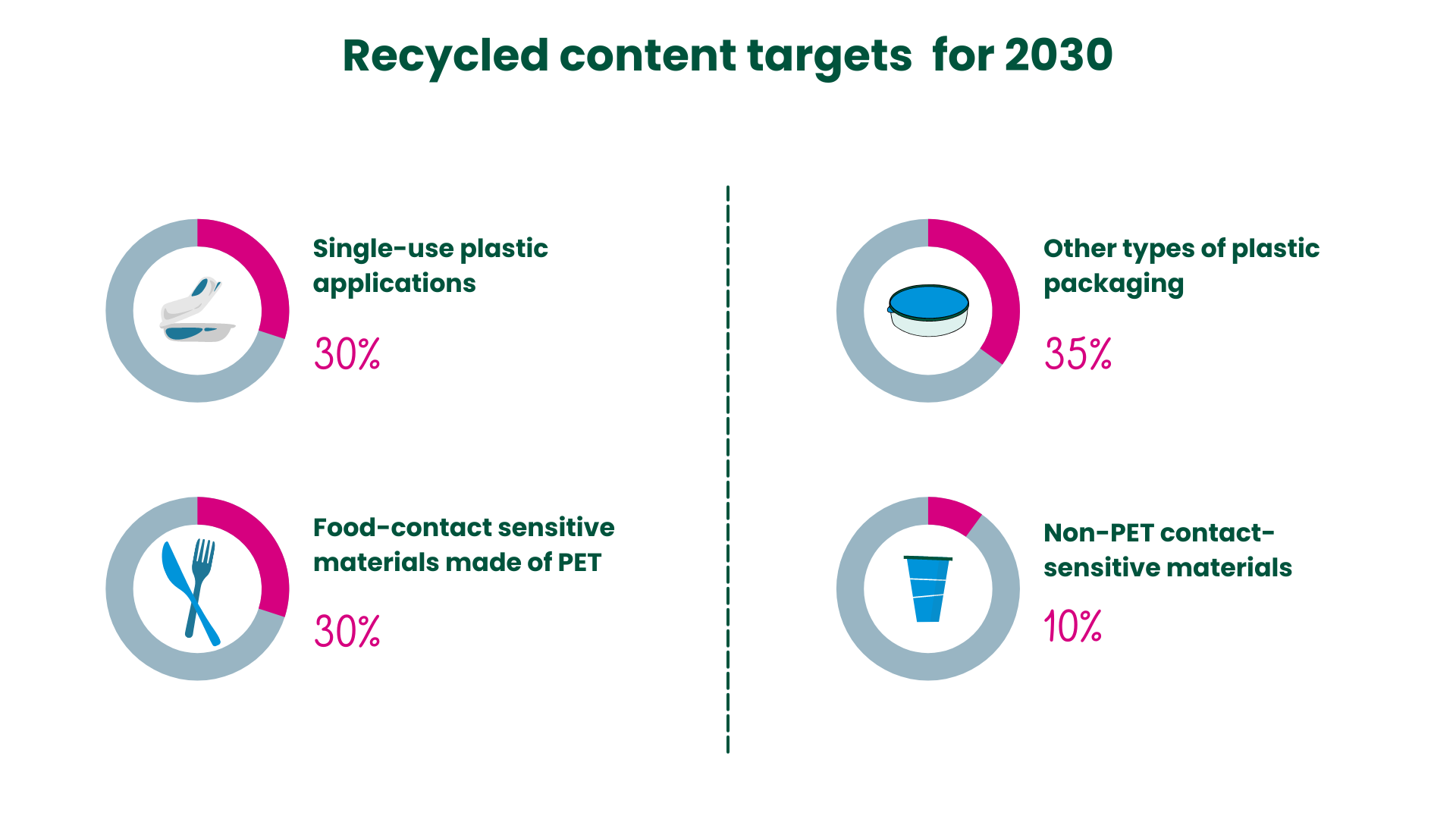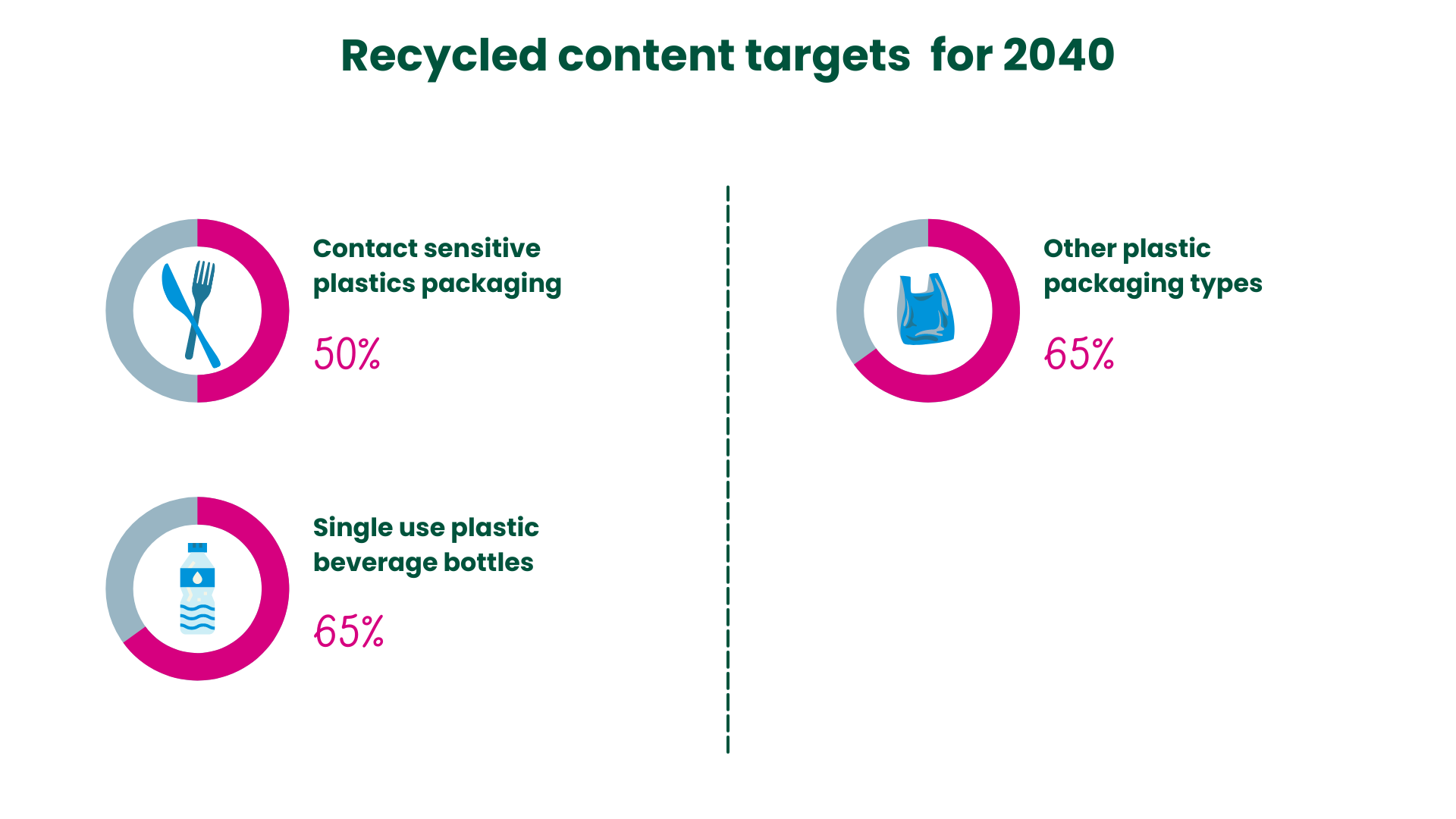On 30 November 2022, the European Commission published the Packaging and Packaging Waste Regulation (PPWR) as a part of the European Green Deal and the new Circular Economy Action Plan. The PPWR aims to reduce packaging waste produced by the EU and move away from linear packaging models, in line with the EU’s ambition to transition to a circular economy.
The PPWR sets new challenges for businesses making use of packaging. All businesses will need to review their packaging portfolios and make sure that they are aligned with new requirements for recyclability, reuse, recycled content, and packaging minimisation.
This blog post explores three key developments of the Packaging and Packaging Waste Regulation that businesses need to be aware of:
1. Transitioning towards reusable packaging
2. Improving recycling rates and recyclability
3. Reducing packaging waste by reducing packaging size
Although most requirements will come into force in 2030, the time to prepare your business is now. To meet the proposed regulations, it’s crucial to establish a dedicated circular packaging strategy that emphasizes increasing the use of reusable packaging and ensuring full recyclability in your packaging portfolio.
1. Transitioning towards reusable packaging
One of the core objectives of the PPWR is to promote reusable packaging, aligning with the waste hierarchy to reduce plastic and carboard packaging waste. The push for reuse is also triggered by limited recycling capacity in the recently approved ban on shipments that cannot be recycled abroad. To further promote the uptake of reusable packaging, the European Commission sets mandatory reuse targets, with a specific focus on beverage packaging, packaging of takeaway food, and transport packaging. These targets aim to encourage businesses to shift away from single-use packaging and explore more sustainable alternatives.

What can you do to prepare?
Packaging portfolio review
Whilst the regulation does not yet clarify how all targets will be monitored, businesses in the targeted sectors of beverage and takeaway food, or making use of transport packaging, and who are still relying on single-use packaging will need to review their entire packaging portfolio to maintain their license to operate. This will require investments and a potential shift in suppliers. As existing reusable packaging business models and reuse systems differ significantly depending on packaging type (primary, secondary, tertiary), businesses will have to research and enquire which logistical solutions best suit their needs.
It is also the moment to prepare your teams and ensure your internal governance structure allows for communication of information and for coordination of projects if changes to operations are needed.
Opportunities for new sustainability commitments
Moreover, by getting ready in advance, the PPWR can be taken not only as a regulatory burden, but also as an opportunity to update your company’s packaging strategy to include transitioning to reusable packaging as an objective, as the PPWR will increase the availability of circular and sustainable packaging options, offering more price competitivity. This transition can also contribute to reducing your company’s scope 3 emissions, as shown by various life-cycle analyses.
Room for innovation
For packaging producers, the regulation creates an opportunity to develop innovations in packaging design and manufacturing to ensure their optimal reusability. Since product manufacturers and retailers have to switch to reusable packaging solutions to meet the Regulation’s requirements, packaging producers who are the first to include reusable packaging in their offering, will ensure their competitiveness on the market.
2. Improving recycling rates and recyclability
The European Commission’s proposal for a Packaging and Packaging Waste Regulation aims to move away from linear models for packaging, by ensuring that all packaging put on the EU market is recyclable and boosting the demand for recycled content in plastic packaging.
Introducing design for packaging recycling criteria
To achieve that all packaging put on the EU market is fully recyclable by 2030, the European Commission introduces a design for recycling obligation. However, as recycling capacities and available technologies vary between Member States, companies need to consider these capabilities when designing and/or supplying their packaging.
What does it mean for your business?
Packaging recyclability requirements will impact all businesses and all sectors, as everyone makes use of packaging. You need to act now to review your company’s packaging portfolio and ensure that your packaging complies with the recyclability requirements or engage with your suppliers to draw up action plans to become compliant by 2030. This will also require analysing the markets in which the company is active and verifying national collection and recycling capacities, to ensure that the Member States your business operates in have, or will have, the technical recycling capabilities to recycle your packaging.
For packaging producers, recyclability requirements present a renewed opportunity to optimize and innovate packaging designs towards recyclability as the demand will only be growing over the upcoming decades. However, they also need to take into account the collection and recycling capacities of each Member States, as they can vary, or their packaging might fall out of the recyclable packaging definition.
Boosting the demand for recycled content
To further incentivise increased recycling rates, the European Commission aims to increase the demand for recycled content by introducing recycled content targets per type of plastic packaging. This means that all items of plastic packaging will need to be manufactured using a certain amount of recycled plastics instead of virgin materials.


What can businesses do to prepare?
The specific rules for calculating and verifying recycled content targets will only be clarified by the European Commission in secondary legislation, to be published in 2026. However, it is already known that all packaging not complying with recycled content targets will not be allowed to be put on the EU market as of 1 January 2030, so to maintain your licence to operate it is essential to start preparing your business now.
To ensure compliance of their packaging, you must now verify the various recycled content targets linked with the packaging part of your portfolio and engage with your suppliers to verify their knowledge of the new requirements – especially if they are located in third countries.
For packaging manufacturers, preparation for compliance with recycled content targets includes ensuring that they are connected to the right secondary material suppliers. As the current recycled content market is relatively limited, especially for specific applications such as food contact packaging, only businesses that have built the right relations for supply will be able to remain competitive when the obligation kicks in.
3. Smaller packaging for less packaging waste
In addition, to further limit packaging waste, the European Commission is looking to tackle excessive packaging compared to the size of the product it protects and sells. This type of excessive packaging can be witnessed in e-commerce, for example, but also in the Fast Moving Consumer Goods market. Moreover, overly large packaging often includes additional packaging, such as bubble wrap or polystyrene, to fill the empty space.
How to prepare for these new requirements?
Companies, especially companies selling products online, will have to review their product portfolio, including upcoming products, and the packaging in which the product will be commercialised and transported, to verify the empty space ratio and ensure that they do not include characteristics to increase the perceived volume of the product.
If non-compliant, businesses will need to revise their go-to-market strategies for each product and update associated sales and transport packaging in line with the empty space ratio requirements. This will require the establishment of a new purchasing cycle for new packaging, including new specifications and price negotiations with suppliers. Setting up a dedicated purchasing team can help streamline this process.
The time to act is now!
The Packaging and Packaging Waste Regulation is expected to be adopted before the next European Parliament elections in May 2024. It will bring significant changes for all businesses making use of packaging.
Although most targets and requirements will come into force as of 2030, businesses must proactively review their product and packaging portfolio in order to maintain their license to operate once the requirements are in place.
Now is the ideal time to inform your teams and engage with you value chain to ensure seamless communication and project coordination within your internal governance structure, facilitating information dissemination, and streamlining operational adjustments if necessary.
Moreover, being proactive in implementing the new requirements of the PPWR, can be taken not only as a regulatory burden, but also present itself as an opportunity to update your business’ packaging strategy to include new sustainability commitments, as the PPWR will increase the availability of circular and sustainable packaging options, offering more price competitivity. By focusing on reusable packaging, improving recyclability, minimising waste, and optimising packaging size, businesses can align themselves with the EU’s circular economy goals.
Need support in preparing your business for new packaging and packaging waste requirements?
Publyon’s Sustainability Services are here to support you on this journey, providing expertise and guidance, every step of the way.
At Publyon, we can help you assess the Regulation’s impact on your operations and advise on necessary strategic and operational changes needed.
Together, let’s build a future where packaging is not just a necessity but a catalyst for sustainable growth and a cleaner planet.




